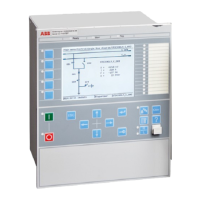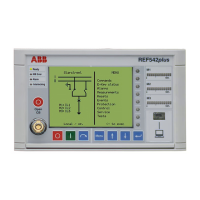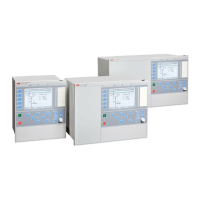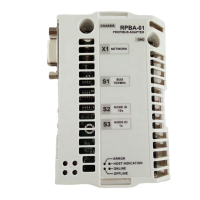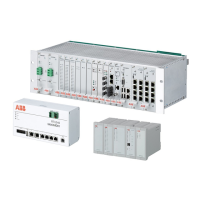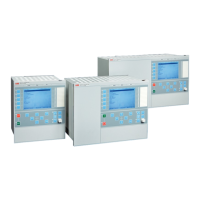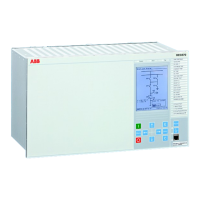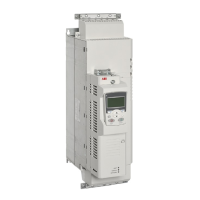Figure 175, shows a vector diagram where the principle of reverse reactance has been
introduced for the transformers in figure 174. The transformers are here supposed to be
on the same tap position, and the busbar voltage is supposed to give a calculated
compensated value V
L
that coincides with the tar
get voltage VSet.
en06000485_ansi.vsd
V
B
R
L
I
T1
=R
L
I
T2
jX
L
I
T1
=jX
L
I
T2
I
T1
=I
T2
=(I
T1
+I
T2
)/2
V
L
1
=
V
L
2
=
V
s
e
t
ANSI06000485 V1 EN-US
Figure 175: Vector diagram for two transformers regulated exactly on target
voltage.
A comparison with figure
172 gives that the line voltage drop compensation for the
purpose of reverse reactance control is made with a value with opposite sign on X
L
,
hence the designation “reverse reactance” or “negative reactance”. Effectively this
means that, whereas the line voltage drop compensation in figure 172 gave a voltage
drop along a line from the busbar voltage V
B
to a load point voltage
V
L
, the line
voltage drop compensation in figure
175 gives a voltage increase (actually, by
adjusting the ratio X
L
/R
L
with respect to the power factor
, the length of the vector V
L
will be approximately equal to the length of V
B
) from V
B
up towards the transformer
itself. Thus in principal the difference between the vector diagrams in figure
172 and
figure 175 is the sign of the setting parameter X
L
.
If now the tap position between the transformers will differ
, a circulating current will
appear, and the transformer with the highest tap (highest no load voltage) will be the
source of this circulating current. Figure
176 below shows this situation with T1 being
on a higher tap than T2.
Section 14 1MRK 511 401-UUS A
Control
420 Bay control REC670 2.2 ANSI
Application manual
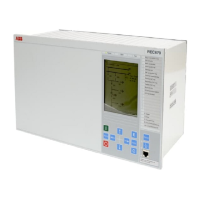
